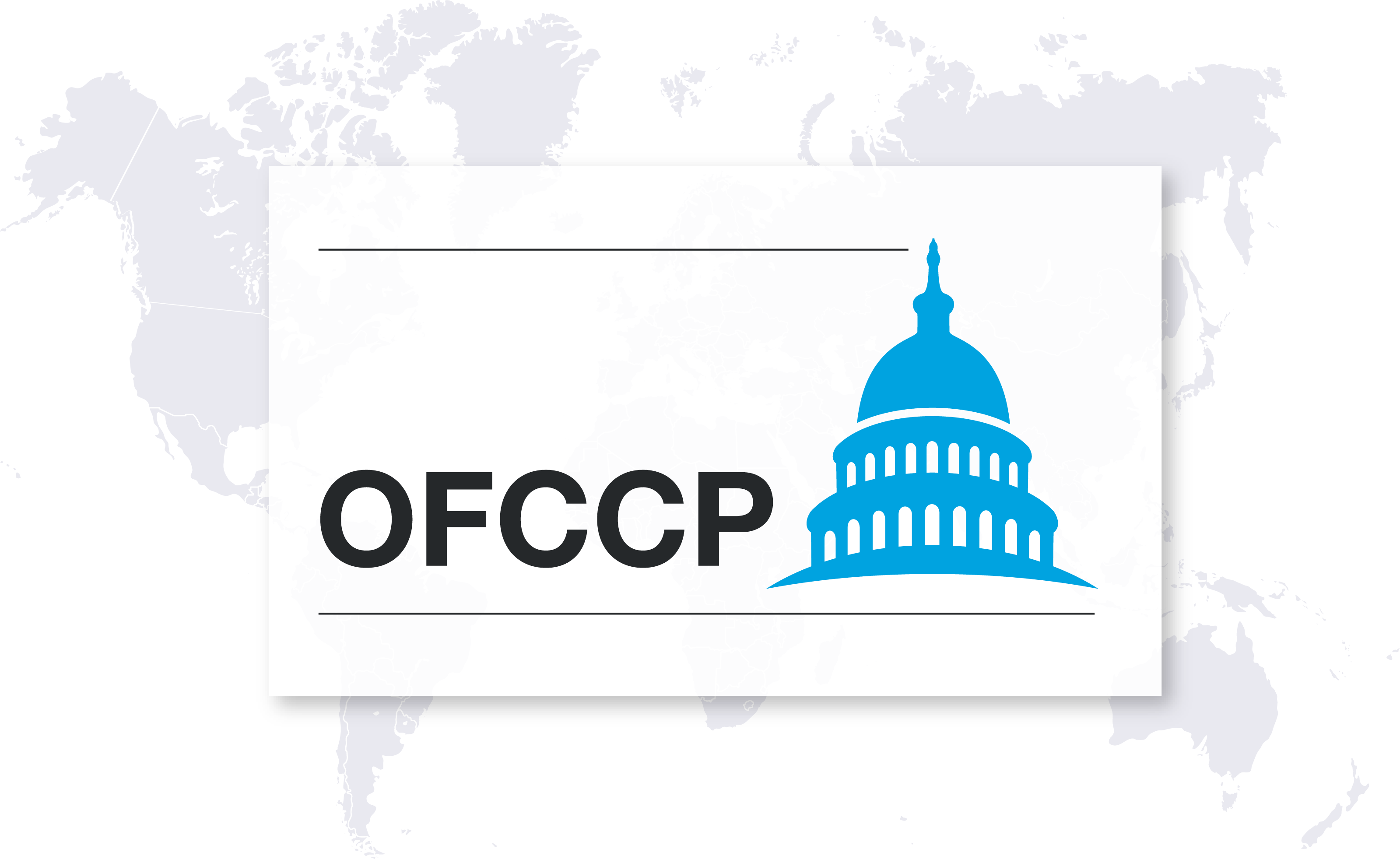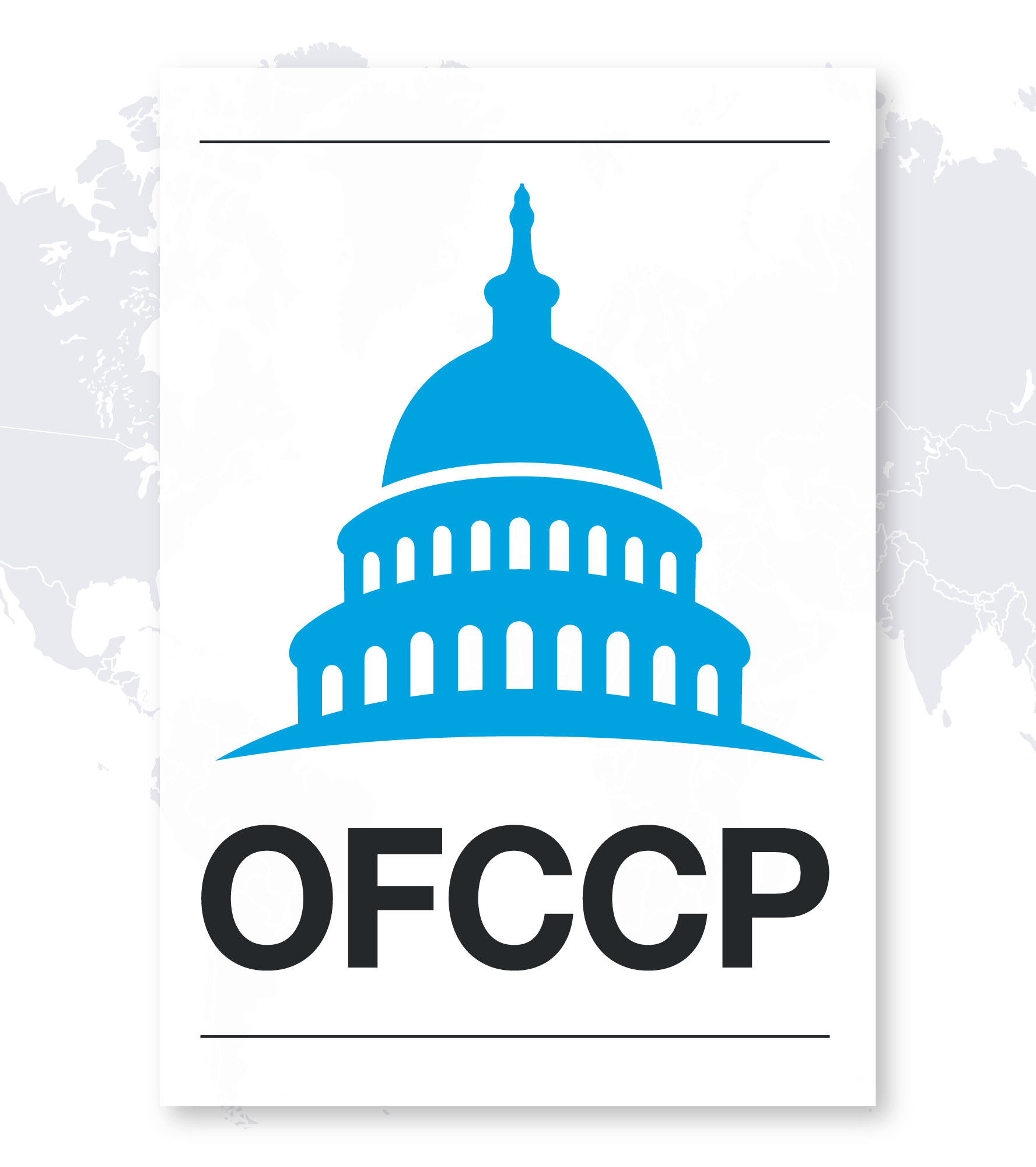OFCCP pay data reporting law guide


Introduction
Expanding Office of Federal Contract Compliance Programs (OFCCP) reporting is part of a broader move to drive pay equity at the federal level.
Federal contractors with more than 50 employees that have contracts valued at $50,000 or more are required to implement Affirmative Action Plans (AAPs) to ensure equal employment opportunities.
Revised Directive 2022-01 and updates to the OFCCP's Supply and Service Scheduling Letter and Itemized Listing issued in August 2023, also require employers to demonstrate their compliance.
Contact us
OFCCP Reporting Requirements
Who Needs to Report?
Federal contractors and subcontractors with 50 or more employees that also have contracts of $50,000 or more must develop and maintain a written Affirmative Action Program (AAP) and are subject to OFCCP audits.
Companies operating at multiple sites are required to create AAPs for each location, facility, or establishment that has 50 or more employees.
Reporting requirements are governed by the Code of Federal Regulations.
When to Report?
An AAP ensures that applicable federal contractors provide equal employment opportunities. As part of the AAP, an in-depth analysis of the contractor's employment process must be carried out to identify any barriers to equal employment, including those for women and minorities.
Contractors must develop an AAP within 120 days of the start of a government contract. Among other requirements, plans must include evaluations of:
- Workforce profile by organizational unit and job group to determine whether female and minority candidates are disproportionately underutilized in the workforce or distributed across the organization;
- Personnel activity (applicant flow, hires, terminations, promotions, and other personnel actions) to determine whether there are selection disparities;
- Compensation system to determine whether there are gender, race, or ethnicity-based disparities. Employers must confirm that compensation is analyzed by gender, race, and ethnicity for disparities;
- Selection, recruitment, referral, and other personnel procedures to determine whether they result in disparities in the employment or advancement of minorities or women; and
- Any other areas that might impact the success of the AAP.
If the compensation analysis identifies any problem areas (including gender, race, or ethnicity-based pay disparities), the employer must develop and execute action-oriented programs to correct them. Additionally, the contractor must carry out periodic self-audits to measure the AAP's effectiveness.
Compliance Evaluations
In addition, the OFCCP audits federal contractors through compliance evaluations. Contractors are notified of an audit by the Supply and Services Scheduling Letter and Itemized Listing.
Upon receipt of a Scheduling Letter, contractors have 30 calendar days to respond. A compliance review may include a number of different evaluations, for instance, a desk audit, an on-site review, and an off-site analysis.
Compensation data submissions include:
Item 19
- Two snapshot dates of compensation data are required, i.e. (1) as of the date of the organizational display or workforce analysis and (2) as of the date of the prior year's organizational display or workforce analysis.
- Contractors must submit employee-level (individual) compensation data for all employees on each snapshot date. That includes gender, race/ethnicity, hire date, job title, EEO-1 Job Category, and AAP job group.
- In addition, they must include "relevant data on the factors used to determine employee compensation such as education, experience, time in current position, duty location, geographical differentials, performance ratings, department or function, job families and/or subfamilies, and salary level/band/range/grade."
- For each employee, contractors must also provide base salary and/or wage rate, annualized base compensation, and hours worked in a typical work week. Other compensation or adjustments to salary must also be identified separately. These may include, for instance, bonuses, incentives, and overtime.
Item 22
Documentation providing the reasoning used to determine compensation, which must include:
- When the compensation analysis was completed;
- The number of employees included, and the number and categories of employees excluded;
- Which forms of compensation were analyzed and if applicable, how the different forms of compensation were separated or combined for analysis;
- That compensation was analyzed by gender, race, and ethnicity; and
- The method of analysis, such as, multiple regression analysis, decomposition regression analysis, meta-analytic tests of z-scores, compa-ratio regression analysis, rank-sums tests, career-stall analysis, average pay ratio, cohort analysis, etc.
"Employee" refers to part-time, temporary, and full-time employees, including "contract, per diem, or day laborers."
If discrepancies are identified during an audit, OFCCP will make "reasonable efforts" to secure compliance with the employer.
Where and When to Report?
Regulatory Filing
Federal contractors and subcontractors must certify that they are meeting their requirement to develop and maintain AAPs. Certification is through the OFCCP Contractor Portal. Annual submissions for this year must be made by July 1, 2024.
External Reporting
External posting is not required. OFCCP is required to treat information obtained in the compliance evaluation as confidential to the extent possible.
Internal Disclosure
No provisions for employee disclosure are mandated. Federal contractors are bound to reporting confidentiality to the extent possible.
Deadlines and Cadence
AAPs must be completed within 120 days from the start of a contract. Certification is required annually for each employer location, facility, or establishment with more than 50 employees.
Compensation data for compliance evaluations must be submitted within 30 calendar days upon receipt of a Scheduling Letter initiating an audit.
OFCCP Pay Transparency Requirements
The OFCCP does not require salary transparency in job postings at present. However, on Jan. 30, 2024, the Federal Acquisition Regulatory (FAR) Council issued a proposal to implement a salary history ban on federal contractors and subcontractors when hiring or setting pay for personnel working on or in connection with a government contract.
If implemented, the proposal would also require federal contractors and subcontractors to disclose salary ranges in job postings. Both rules would apply in connection with any federal government contract with a value of $10,000 or more.
Employers may also be subject to local jurisdiction and/or state pay transparency legislation.
Employment Equity Standards
Affirmative action is intended to ensure equal employment opportunities for all job applicants and employees. Employers must ensure that employees are treated without regard to race, color, religion, sex, sexual orientation, gender identity, national origin, disability, or status as a protected veteran.
The requirement covers all aspects of employment, including the hiring process, promotion, termination of employment, and pay. Additional guidance for OFCCP contractors related to protections against discrimination in hiring or pay decisions was issued in January 2024.
Federal contractors are covered by three laws; Executive Order (EO) 11246, Section 503 of the Rehabilitation Act of 1973 and the Vietnam Era Veterans' Readjustment Assistance Act of 1974 (VEVRAA). All three impose Affirmative Action Program requirements on federal contractors.
The Risks of Non-Compliance
Non-compliance is overseen by the OFCCP, the Solicitor of Labor and potentially the Department of Justice. Non-compliance may result in a number of enforcement actions:
- A Predetermination Notice and subsequent Notice of Violation. A predetermination Notice allows the employer to take remedial action. Employers have 15 days to respond from receipt of the Notice.
- The OFCCP may seek back pay and other compensation for employees who have suffered pay discrimination. Individuals do not need to have filed a complaint for OFCCP to seek relief on their behalf.
- The issue may be referred to the Solicitor of Labor who can impose sanctions on uncooperative employers. The Department of Justice may also bring a civil action against the employer.
- Ultimately, the OFCCP may either terminate or suspend the federal contracts of non-compliant employers.
How Can Trusaic Assist with OFCCP Affirmative Action Plan (AAP) & Audit Compliance?
1. Comply - Use Trusaic's GPDR solution to complete required reporting by compliance deadlines:
Applicability Determination: Perform an accurate assessment of your applicability, according to jurisdictional specific definitions and regulatory frameworks so you can understand your reporting obligations across the globe.
Deadline Management: Prepare ahead of time with project timelines, timely notifications, and reminders, to keep you on track to meeting jurisdictional deadlines.
Expert Legal Guidance and Support: Benefit from the expertise of our trusted pay equity attorneys, so you understand your compliance requirements across a diverse global regulatory landscape. Receive world-class customer support, including assistance throughout the compliance process.
Streamlined Data Extraction: Collect the necessary data for analysis and submission with a simple click of a button; powered by certified data integrations with the world's largest HCM, HR and Payroll platforms, including Workday, SAP, UKG and ADP. Provide data through Trusaic's Workplace Equity platform, a SOC 2 Type II and GDPR-compliant tool for data transmission.
Data Quality Assurance: Trusaic performs data validations to ensure your collected data and information aligns with the standards and definitions provided by each jurisdiction.
Compliant Report Outputs: Take away the burden of reporting by effortlessly generating outputs containing necessary compliance information.
Reporting Checklist: Follow step-by-step guidance on where, when and how to report to any jurisdiction's regulatory body, as well as your required internal disclosure and public posting obligations.
2. Correct - Use PayParity and OpportunityParity to understand, explain and resolve pay disparities:
Risk Assessments: Stay aware of any potential exposure to any government audit or litigation. Our cross-functional team of data scientists, statisticians, and government regulatory compliance experts have rigorously worked to reverse-engineer the calculations that will be used by jurisdictions to estimate pay disparities, so you can prepare in advance.
Understand your Pay Gaps: Leverage Trusaic's pay equity software solution to explain your pay gaps so you can understand the root causes and safeguard from equal pay claims and legal action.
Resolve Pay Disparities: Make pay adjustments where applicable so you can eliminate pay disparities and show improvements in your reported pay gaps from one year to the next.
Identify Barriers to Professional Growth: Ensure workforce diversity and equity with hiring, promotion, retention, and opportunity analytics using opportunity equity software solution.
3. Communicate - Use Trusaic's Workplace Equity Solution to communicate narratives and share salary ranges with confidence:
Workplace Equity Narrative: Communicate the sources of your pay gaps, progress objectives, and corrective measures to employees and internal stakeholders with Trusaic's Workplace Equity product suite. Show data-backed progress in your pay gaps over time.
Salary Range Explainability: Use Salary Range Finder to establish and post competitive and equitable pay ranges to confidently comply with pay transparency laws.
Mitigate Risk of Recurrent Pay Disparities: Ensure new hires receive fair pay offers with the use of external labor market data and internal pay equity analytics to reduce unplanned and expensive pay remediations.
Sign up for PayParity by August 31, 2024
and receive OpportunityParityTM at no additional cost
Sign up for PayParity by August 31, 2024 and receive OpportunityParityTM at no additional cost
